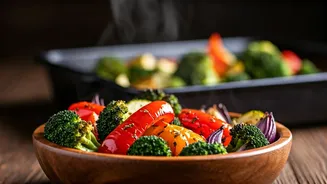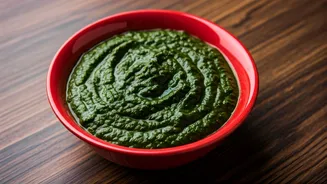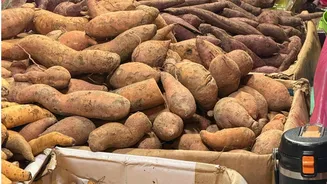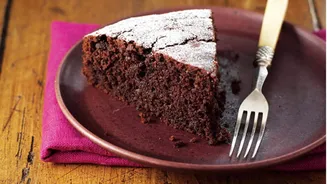Introduction: Why It Works
Roasted Vegetable Soup is a culinary masterpiece, celebrated for its rich flavors and nourishing qualities. The secret lies in the roasting process, which
caramelizes the natural sugars in vegetables, intensifying their taste and creating a depth of flavor that's simply unmatched. This method also enhances the textures, making the soup both smooth and satisfying. Roasted vegetables release their full potential, contributing to a soup that’s both delicious and full of vitamins and minerals. The simplicity of the recipe is another factor, allowing the natural flavors of the vegetables to shine through without being overpowered by excessive seasoning or complex techniques. This results in a flavorful, healthy, and easy-to-prepare meal, perfect for any season. The beauty of this soup also lies in its adaptability; you can customize the vegetable combination to suit your preferences and what’s available, ensuring a unique and delightful experience every time.
Essential Ingredients Needed
Creating a stellar Roasted Vegetable Soup starts with the right ingredients. The core components usually include a variety of fresh vegetables, such as carrots, onions, celery, bell peppers, zucchini, and tomatoes. These vegetables form the foundation of the soup, providing a range of flavors and textures. The addition of aromatic herbs like garlic and rosemary elevates the flavor profile, adding depth and complexity. Olive oil plays a crucial role in the roasting process, helping to caramelize the vegetables and infuse them with a rich taste. Vegetable broth serves as the liquid base, providing moisture and carrying the flavors of the roasted vegetables throughout the soup. Seasonings, including salt and pepper, are vital for enhancing the flavors and balancing the overall taste. The quality of your ingredients directly influences the final result, so always opt for fresh, seasonal produce whenever possible. Using good quality olive oil and vegetable broth also greatly contributes to the depth of flavor in the soup.
Roasting: Key to Flavor
The technique of roasting is the heart of this soup. It is essential for achieving the soup’s distinctive flavor and texture. Begin by preheating your oven to a suitable temperature, typically around 400°F (200°C). Prepare your vegetables by washing, chopping them into uniform sizes, and tossing them with olive oil, salt, and pepper. Arrange the vegetables in a single layer on a baking sheet to ensure even roasting. The roasting time varies depending on the type of vegetables and the desired level of caramelization, but generally, it takes about 30 to 45 minutes, or until the vegetables are tender and slightly browned. During roasting, the vegetables release their natural sugars, leading to a depth of flavor that is both sweet and savory. The roasting process also helps to soften the vegetables, making them easier to blend into a smooth and creamy soup. Monitoring the vegetables and giving them a gentle stir halfway through ensures even cooking and prevents burning. The goal is to achieve a balance of tenderness and caramelization, which creates a delightful and satisfying soup.
Soup Assembly Step-by-Step
Once the vegetables are perfectly roasted, the next phase involves combining them into a delicious soup. Allow the roasted vegetables to cool slightly before transferring them to a large pot or Dutch oven. Add vegetable broth to the pot, enough to cover the vegetables completely. If desired, include additional herbs or spices at this stage to enhance the flavor profile. Bring the mixture to a gentle simmer over medium heat, allowing the flavors to meld together. For a smooth consistency, use an immersion blender to puree the soup directly in the pot. Alternatively, you can transfer the soup in batches to a regular blender, being cautious when handling hot liquids. Blend until the soup is velvety smooth and has a consistent texture. If you prefer a chunkier soup, blend only half of the mixture and add the unblended portion back in. Taste the soup and adjust seasonings as needed, adding more salt, pepper, or herbs to your liking. Finally, heat the soup through, ensuring it’s hot before serving.
Ingredient Substitutions
Flexibility is a significant advantage of Roasted Vegetable Soup. The recipe is highly adaptable to accommodate different tastes and dietary needs. If you’re missing a specific vegetable, substitute with another vegetable that offers similar textures and flavors. For example, sweet potatoes or butternut squash can replace carrots, while leeks can stand in for onions. In case you don’t have access to fresh herbs, dried herbs can serve as a suitable alternative, just use them sparingly to avoid overpowering the soup. If you want a richer soup, add a splash of cream or coconut milk towards the end of the cooking process; this is optional. For those avoiding gluten, the soup is naturally gluten-free if you use a gluten-free vegetable broth. Similarly, if you're keeping it vegan, just ensure your broth and optional toppings are vegan-friendly. Feel free to incorporate ingredients like mushrooms, parsnips, or even a hint of spice with a pinch of red pepper flakes. Don't be afraid to experiment to develop your preferred taste!
Frequently Asked Questions
Addressing common inquiries can clarify the process and make it easier to prepare Roasted Vegetable Soup. *Can I freeze the soup?* Yes, the soup freezes well. Let it cool completely, then store it in an airtight container or freezer bag for up to three months. *How long does the soup last?* The soup will last in the refrigerator for about 3-5 days. Ensure it is stored in an airtight container. *Can I add protein to the soup?* Certainly! Cooked chicken, beans, or lentils can add protein and make the soup a more complete meal. *What toppings go well with the soup?* Consider a variety of toppings like a dollop of sour cream or Greek yogurt, a sprinkle of fresh herbs such as chives or parsley, croutons, or a drizzle of olive oil. *What if I don't have an oven?* You can still make a delicious version by sautéing the vegetables on the stovetop until they soften and start to caramelize. Although it won't be precisely roasted, the resulting flavor is still wonderful.








